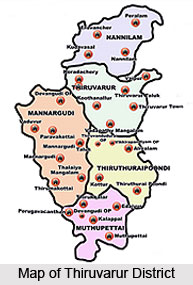 While introspecting the state of Tamil Nadu it becomes obvious that one comes across multitudes of towns and cities that have developed by leaps and bounds. In the vista of towns and cities Kodavasal remains stand apart. Kodavasal is a panchayat town, which is flourished in the district of Thiruvarur of the same state of Indian subcontinent. .
While introspecting the state of Tamil Nadu it becomes obvious that one comes across multitudes of towns and cities that have developed by leaps and bounds. In the vista of towns and cities Kodavasal remains stand apart. Kodavasal is a panchayat town, which is flourished in the district of Thiruvarur of the same state of Indian subcontinent. .
Any discussion on a place or town of Indian Territory would be imperfect without the information about the town`s demographical situation. As a result a number of demographers have been deployed in Kodavasal so that they could conduct surveys and prepared reports on the basis of collected facts. These comprehensive reports are essential for enlightening people with various aspects that are related to Kodavasal. Due mentioning may be made of the Indian Census report of a specific years .It was issued in the year 2001 and thus throw light on demographical facts of Kodavasal viz. literacy rate, population condition etc. As has been depicted in the report , the total population of Kodavasal showed a counting of 13,247. If any one wants to decipher the status of males, females and also children who are living in Kodavasal , then thorough study of this report is a necessity. Interestingly, females in Kodavasal are more in number than that of males. To be specific, male populace constitutes 49 %, while the population of females is 51 %.
It also can infer the status of literacy of Kodavasal from the report. It is noteworthy that the average literacy rate of Kodavasal is 72 percent. Thus it is even higher than 59.5 percent, the average literacy rate of India. That development has occurred in Kodavasal is evident. In particular, male literacy rate is 78 %. Compared to male literacy, rate of female literacy is less constituting 66 %. Information about children who are residing in Kodavasal too can be inferred. Children who fall into the age group of six years constitute 10% of the total population of Kodavasal.
Few information about the whole of Thiruvarur district too can be inferred from varied sources. Due to the integrity of the district it is quite natural that Kodavasal too is going to follow the same tradition. Agriculture is one of the occupations of the people of the district. Crops that are produced include rice, pulses, sugarcane, greengram, Blackgram, Cotton, Groundnut, Coconut, Gingelly, Palm, Flowers, Oil seeds etc. Some people even adapt to animal husbandry and fisheries as their occupation. Industrial growth too has occurred. Products include Khadi, cotton, silk, woolen, polyester and also fertilizers, ceramics have developed.



















